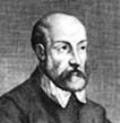
Andrea Palladio (1508 – 1580)
The Renaissance master Andrea Palladio is often described as the most influential and most copied architect in the Western world.
Born Andrea Di Pietro della Gondola in Padua, Italy. Later named Palladio after the Greek goddess of wisdom. The new name was given to Palladio by an employer, the scholar Trissino.
Drawing inspiration from classical architecture, Palladio created carefully proportioned, pediment buildings that became models for stately homes and government buildings in Europe and America. One of many architectural features inspired by Palladio is the popular Palladian window.
By the 1540s, Palladio was using classical principles to design a series of country villas and urban palaces for the nobility of Vicenza. One of his most famous is Villa Capra, also known as the Rotunda, which was modeled after the Roman Pantheon. Palladio also designed the Basilica in Vicenza, and in the 1560s he began work on religious buildings in Venice. The great basilica San Giorgio Maggiore is one of Palladio’s most elaborate works.
In 1570, he published his masterwork: I Quattro Libri dell’ Architettura, or The Four Books of Architecture. This important book outlined Palladio’s architectural principles and provided practical advice for builders. Palladio’s ideas spread across Europe and into the New World. American statesman Thomas Jefferson borrowed Palladian ideas when he designed Monticello, his home in Virginia.
Although influenced by a number of Renaissance thinkers and architects, Palladio’s ideas resulted independently of most contemporary ideas. Creatively linked to the artistic traditions of Alberti and Bramante, Palladio used principles that related to art and forms that related to nature to generate his architecture.
Palladio’s architecture and theories embodied Renaissance architectural thought in the second half of the sixteenth century. Although Palladio’s works lack some of the grandeur of other Renaissance architects, he established a successful and lasting way of recreating ancient classicism.
Notable buildings:
Palazzo Chiericati, at Vicenza, Italy, 1550 to 1580.
Redentore Church, at Venice, Italy, 1576 to 1591.
San Giorgio Maggiore, at Venice, Italy, 1560 to 1580.
Teatro Olimpico, at Vicenza, Italy, 1584.
Villa Capra, or Villa Rotunda, at Vicenza, Italy, 1566 to 1571. * 3D Model *
Villa Foscari, at Malcontenta, Italy, 1549 to 1563.
Villa Trissino, at Vicenza, Italy, 1576.